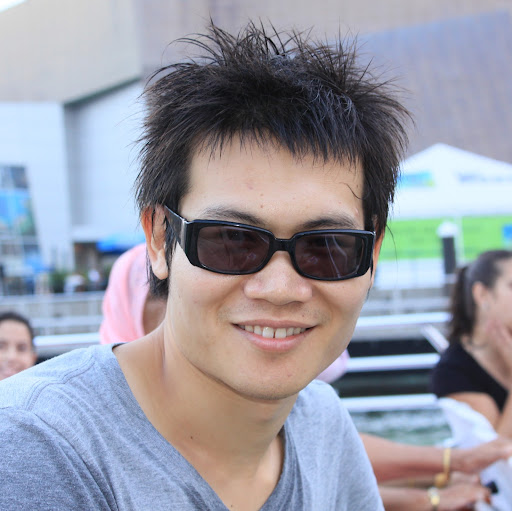Min Li
age ~38
from Fremont, CA
- Also known as:
-
- Min X Liu
- Li Min
Min Li Phones & Addresses
- Fremont, CA
- Eagan, MN
- Madison, WI
Lawyers & Attorneys

Min Li - Lawyer
view sourceAddress:
Hogan Lovells International, LLP
(216)1223873 (Office)
(216)1223873 (Office)
Licenses:
New York - Currently registered 2011
Education:
Chicago Kent College of Law, Iit

Min Li - Lawyer
view sourceOffice:
Reed Smith Richards Butler
Specialties:
Litigation & Dispute Resolution
ISLN:
921002152
University:
BPP Law School, London, 2005; Dalian Maritime University, 1999; Dalian Maritime University, 1999; Law School of Dalian Maritime University, 2002; University of Hong Kong, 2008
Law School:
Faculty of Laws, University College London, LL.M., 2003
Real Estate Brokers

Min Li, 27519 NC Software Engineer
view sourceWork:
Min Li
809 Blackmar Street
(919)2443590 (Office), (919)2443590 (Cell), (919)2443590 (Fax)
809 Blackmar Street
(919)2443590 (Office), (919)2443590 (Cell), (919)2443590 (Fax)
License Records
Min Li
License #:
6776156-4405 - Active
Category:
Nurse
Issued Date:
Aug 29, 2012
Expiration Date:
Jan 31, 2018
Type:
A.P.R.N.
Min Li
License #:
2705106780
Category:
Contractor
Min Li
License #:
088162 - Expired
Category:
Registered Nurse
Issued Date:
Mar 5, 2009
Expiration Date:
Jan 31, 2017
Medicine Doctors

Min Li
view sourceSpecialties:
Hematology/Oncology
Work:
Intermountain Blood & Marrow
8TH Ave & C St, Salt Lake City, UT 84143
(801)4081819 (phone), (801)4088453 (fax)
8TH Ave & C St, Salt Lake City, UT 84143
(801)4081819 (phone), (801)4088453 (fax)
Languages:
English
Spanish
Spanish
Description:
Ms. Li works in Salt Lake City, UT and specializes in Hematology/Oncology. Ms. Li is affiliated with Intermountain Medical Center and LDS Hospital.
Name / Title
Company / Classification
Phones & Addresses
L & C CLEVELAND, INC
GOLDEN WORLD LLC
APM ASIAN ART INC
J & Y CLEVELAND, INC
GOLDEN MOUNTAIN LLC
JIA YIN INC
LI GARDEN RESTAURANT INC
President
OET INTERNATIONAL LIMITED
Us Patents
-
Specular Spin Valve With Robust Pinned Layer
view source -
US Patent:6388847, May 14, 2002
-
Filed:Feb 1, 2000
-
Appl. No.:09/495348
-
Inventors:Cheng T. Horng - San Jose CA
Min Li - Fremont CA
Ru-Ying Tong - San Jose CA
Rong-Fu Xiao - Fremont CA -
Assignee:Headway Technologies, Inc. - Milpitas CA
-
International Classification:G11B 539
-
US Classification:36032411, 2960314
-
Abstract:A specular spin valve structure that is more robust than currently available specular spin valves is described. The improved stability is achieved by a using a modified pinned layer that is a laminate of three layersâa layer nickel-chromium, between about 3 and 4 Angstroms thick, sandwiched between two layers of cobalt-iron. A key requirement is that the cobalt-iron layer closest to the copper separation layer must be about twice as thick as the other cobalt-iron layer. A process for manufacturing this structure is also disclosed.
-
Spin Valve Structure Design With Laminated Free Layer
view source -
US Patent:6392853, May 21, 2002
-
Filed:Jan 24, 2000
-
Appl. No.:09/489973
-
Inventors:Min Li - Fremont CA
Simon H. Liao - Fremont CA
Cheng T. Horng - San Jose CA
Youfeng Zheng - Sunnyvale CA
Ru-Ying Tong - San Jose CA
Kochan Ju - Fremont CA -
Assignee:Headway Technologies, Inc. - Milpitas CA
-
International Classification:G11B 539
-
US Classification:36032412, 360314, 428692, 428332, 428611
-
Abstract:The giant magnetoresistance (GMR) effect includes a contribution that is due to anisotropic magnetoresistance (AMR). Unfortunately the AMR effect tends to degrade the peak-to-peak signal asymmetry. Additionally, a high AMR/GMR ratio causes a larger signal asymmetry variation. It is therefor desirable to reduce both the AMR contribution as well as the AMR/GMR ratio. This has been achieved by modifying the free layer through the insertion of an extra layer of a highly resistive or insulating material at approximately mid thickness level. This layer is from 3 to 15 Angstroms thick and serves to reduce the Anisotropic Magneto-resistance contribution to the total magneto-resistance of the device. This reduces the GMR contribution only slightly but cuts the AMR/GMR ratio in half, thereby improving cross-track asymmetry and signal linearity.
-
Ruthenium Bias Compensation Layer For Spin Valve Head And Process Of Manufacturing
view source -
US Patent:6396671, May 28, 2002
-
Filed:Mar 15, 2000
-
Appl. No.:09/525670
-
Inventors:Cheng T. Horng - San Jose CA
Kochan Ju - Fremont CA
Min Li - Fremont CA
Simon H. Liao - Fremont CA
Ku-Ying Tong - San Jose CA -
Assignee:Headway Technologies, Inc. - Milpitas CA
-
International Classification:G11B 539
-
US Classification:3603241, 2960314, 36032412
-
Abstract:A spin valve structure, and method for manufacturing it, are described. The valve is subject to only small bias point shifts by sense current fields while at the same time has good GMR characteristics. This is achieved by introducing a layer of about 15 Angstroms of ruthenium between the seed layer and the free layer. This acts as an effective bias control layer with the added benefit of providing interfaces (to both the seed and the free layer) that are highly favorable to specular reflection of the conduction electrons. The HCP crystal structure of this ruthenium layer also improves the crystalline quality of the free layer thereby improving its performance with respect to the GMR ratio.
-
Bottom Spin Valves With Continuous Spacer Exchange (Or Hard) Bias
view source -
US Patent:6466418, Oct 15, 2002
-
Filed:Feb 11, 2000
-
Appl. No.:09/502035
-
Inventors:Cheng T. Horng - San Jose CA
Min Li - Fremont CA
Simon H. Liao - Fremont CA
Ru-Ying Tong - San Jose CA
Chyu Jiuh Torng - Pleasanton CA
Rongfu Xiao - Fremont CA -
Assignee:Headway Technologies, Inc. - Milpitas CA
-
International Classification:G11B 539
-
US Classification:36032412, 2960314
-
Abstract:A method for forming a specularly reflecting bottom spin valve magnetoresistive (SVMR) sensor element with continuous spacer exchange hard bias and a specularly reflecting bottom spin valve magnetoresistive (SVMR) sensor element fabricated according to that method. To practice the method, there is provided a substrate upon which is formed a seed layer, upon which is formed an antiferromagnetic pinning layer, upon which is formed a ferromagnetic pinned layer, upon which is formed a non-magnetic spacer layer, upon which is formed a ferromagnetic free layer, upon which is formed a specularly reflecting and capping layer. The width of the sensor element is defined by a pair of conducting leads aligned upon a pair of continuous spacer exchange hard bias layers.
-
Spin Filter Bottom Spin Valve Head With Continuous Spacer Exchange Bias
view source -
US Patent:6517896, Feb 11, 2003
-
Filed:Aug 7, 2000
-
Appl. No.:09/633768
-
Inventors:Cheng T. Horng - San Jose CA
Min Li - Fremont CA
Ru-Ying Tong - San Jose CA -
Assignee:Headway Technologies, Inc. - Milpitas CA
-
International Classification:B05D 512
-
US Classification:427123, 4271263, 4271264, 427404, 4274191, 4274192, 4273761, 427128
-
Abstract:A high performance specular free layer bottom spin valve is disclosed. This structure made up the following layers: NiCr/MnPt/CoFe/Ru/CoFe/Cu/free layer/Cu/Ta or TaO/Al O. A key feature is that the free layer is made of a very thin CoFe/NiFe composite layer. Experimental data confirming the effectiveness of this structure is provided, together with a method for manufacturing it and, additionally, its longitudinal bias leads.
-
Single Top Spin Valve Heads For Ultra-High Recording Density
view source -
US Patent:6522507, Feb 18, 2003
-
Filed:May 12, 2000
-
Appl. No.:09/570017
-
Inventors:Cheng T. Horng - San Jose CA
Min Li - Fremont CA
Ru-Ying Tong - San Jose CA -
Assignee:Headway Technologies, Inc. - Milpitas CA
-
International Classification:G11B 539
-
US Classification:36032412, 2960314, 148108
-
Abstract:A method for fabricating a single top spin valve head that is capable of reading ultra-high density recordings. Said top spin valve has a CoFe free layer for high GMR ratio, which is grown on a NiCr/Ru layer to provide better magnetic properties and has a ferromagnetically coupled CoFe/NiCr/CoFe laminated pinned layer for thermal stability and robustness.
-
Method For Forming A Bottom Spin Valve Magnetoresistive Sensor Element
view source -
US Patent:6581272, Jun 24, 2003
-
Filed:Jan 4, 2002
-
Appl. No.:10/037812
-
Inventors:Min Li - Fremont CA
Simon H. Liao - Fremont CA
Masashi Sano - Nagano, JP
Kiyoshi Noguchi - Nagano, JP
Kochan Ju - Fremont CA
Cheng T. Horng - San Jose CA -
Assignee:Headway Technologies, Inc. - Milpitas CA
-
International Classification:G11B 5127
-
US Classification:2960314, 2960308, 2960315, 36032411, 36032412, 427127, 427130, 427131
-
Abstract:A method for forming a bottom spin valve sensor having a synthetic antiferromagnetic pinned (SyAP) layer, antiferromagnetically coupled to a pinning layer, in which one of the layers of the SyAP is formed as a three layer lamination that contains a specularly reflecting oxide layer of FeTaO. The sensor formed according to this method has an extremely high GMR ratio and exhibits good pinning strength.
-
Top Spin Valve Heads For Ultra-High Recording Density
view source -
US Patent:6614630, Sep 2, 2003
-
Filed:Apr 23, 2001
-
Appl. No.:09/839960
-
Inventors:Cheng Horng - San Jose CA
Ru-Ying Tong - San Jose CA
Min Li - Fremont CA -
Assignee:Headway Technologies, Inc. - Milpitas CA
-
International Classification:G11B 539
-
US Classification:36032412
-
Abstract:A method for fabricating a specularly reflecting top spin valve read head with an ultra-thin free layer that is capable of reading ultra-high density recordings. This top spin valve has a composite CoFeâNiFe free layer that is formed on a composite RuâCu buffer layer which provides lattice-matching to the free layer as well as enhanced specular reflection. The free layer is pinned by a synthetic antiferromagnetic pinning layer. The resulting fabrication has a conducting lead layer formed over it that defines the sensor trackwidth and a magnetic bias layer formed outside of the conducting lead layer.
Resumes

Min Li Woodbury, MN
view sourceWork:
Excilon New Material Technology Co
Mar 2012 to 2000
Senior Research Engineer Donghua University
2007 to 2012
Research Associate Georgia Institute of Technology
2009 to 2010
Visiting Scholar Hengli Chemical Fiber Co. Ltd., Jiangsu, China
2007 to 2007
Technical intern
Mar 2012 to 2000
Senior Research Engineer Donghua University
2007 to 2012
Research Associate Georgia Institute of Technology
2009 to 2010
Visiting Scholar Hengli Chemical Fiber Co. Ltd., Jiangsu, China
2007 to 2007
Technical intern
Education:
Donghua University
2012
PhD in Material Science and Engineering Georgia Institute of Technology
2009 to 2010
Visiting Scholar Donghua University
2007
Bachelor in Engineering
2012
PhD in Material Science and Engineering Georgia Institute of Technology
2009 to 2010
Visiting Scholar Donghua University
2007
Bachelor in Engineering

Min Li
view sourceIsbn (Books And Publications)


Zhen Shi De Mao Zedong: Mao Zedong Shen Bian Gong Zuo Ren Yuan De Hui Yi
view sourceAuthor
Min Li
ISBN #
7507315479
Plaxo

Min Li
view sourceHong KongAssociate at Global Infrastructure Partners Past: Associate at Morgan Stanley, Associate at JPMorgan, Consultant at PwC Consulting

Li Min
view sourceQingdao, China

Min Li
view sourceJohns Hopkins University

Min Li
view sourceEngineer at Cadence Desigy Systems

Min Min Li
view source
Min Jee Li
view source
Min Hua Li
view source
Min Bang Li
view source
Wg Min Li
view source
Min Leila Li
view source
Min Jun Li
view source
Min Li
view sourceYoutube
Googleplus

Min Li
Lived:
Naperville IL
Madison WI
DeKalb IL
Beijing China
ZhenZhou China
Oslo Norway
Madison WI
DeKalb IL
Beijing China
ZhenZhou China
Oslo Norway
Work:
United IOT inc - CTO
Education:
Master of Science - Computer Science
About:
Promoting social equality, civil liberty by enhancing socio-intelligence through effective human and software integration.

Min Li
Work:
Q - Q (2009-2012)
About:
Q
Tagline:
New world

Min Li

Min Li

Min Li
Education:
King's College London - Mechanical Engineering

Min Li
Work:
ITG

Min Li
Education:
Pennsylvania State University

Min Li
Education:
Rutgers
Myspace
Classmates

Min LI Mitchell, Pahoa Hi...
view sourceFlickr
Get Report for Min Li from Fremont, CA, age ~38
















